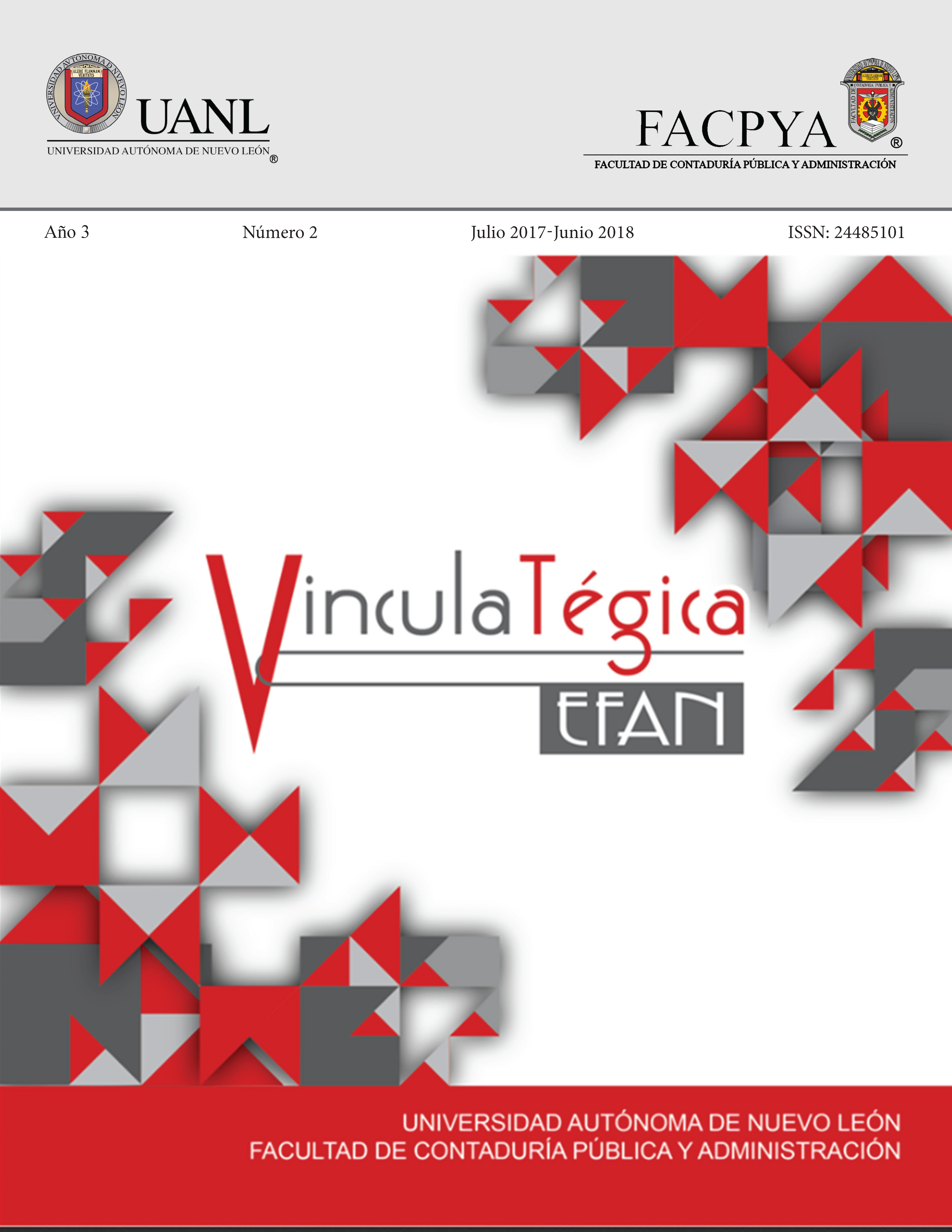Modelo de Competitividad Global para la Industria Automotriz
Palabras clave:
Competitividad, Industria automotriz, ModeloResumen
La industria automotriz está representada por diez potencias mundiales las cuales consolidan más de 50% del total de vehículos automotores producidos a nivel mundial, países como Alemania, Japón, China, Estados Unidos y Corea del Sur son los dominantes. En términos económicos la industria automotriz (IA) fabrica 95.6 Millones de autos y representa 2.9 trillones de dólares americanos, lo cual es vital para el progreso de la economía global. Este artículo enfoca su investigación en determinar los pilares competitivos relevantes de las economías líderes en la industria automotriz para determinar los factores que hacen que estos países logren su liderazgo competitivo industrial. Utilizando la metodología de competitividad global y sus índices se logró encontrar que el pilar de mercado interno es determinante para lograr tal liderazgo, algo que se discutirá ampliamente en el artículo.
Descargas
Citas
AAPC. (2015). State of the U.S Automotive Industry 2015. AAPC, 1(July), 30.
Anil Bhat, S. K. S. (2014). Supply chain risk management dimensions in Indian automobile industry. Benchmarking, 21(6), 1023. http://doi.org/doi:10.1108/BIJ-02-2013-0023
Chares River Associates. (2001). Competitiveness Factors For Attracting and Maintaining Automotive Investment: Comparison between Canada and Mexico. The Ontario Ministry of Economic Development and Trade, 1(1), 50.
Chikán, A. (2008). National and firm competitiveness: a general research model. Competitiveness Review: An International Business Journal Incorporating Journal of Global Competitiveness, 18(1/2), 20–28. http://doi.org/10.1108/10595420810874583
Cho, Y. J., Leem, C. S., & Shin, K. T. (2008). The relationships among manufacturing innovation, competitiveness, and business performance in the manufacturing industries of Korea. International Journal of Advanced Manufacturing Technology, 38(7–8), 840–850. http://doi.org/10.1007/s00170-007-1107-8
Deloitte Touche Tohmatsu Ltd. (2015). Mexico ’ s growth drivers over the next 25 years Competitiveness : Catching the next wave. Deloitte Special Report, 1(1), 2015.
Di Bitonto, S. (2013). The Automotive Industry in Germany. Germany Trade & Invest, 14.
Gao, P., Kaas, H.-W., Mohr, D., & Wee, D. (2016). Disruptive trends that will transform the auto industry. McKinsey & Company, 1(January), 1–9. Retrieved from http://www.mckinsey.com/industries/high-tech/our-insights/disruptive-trends-that-will transform-the-auto-industry?cid=other-eml-alt-mip-mck-oth-1602
Giuli, M. (2013). The Competitiveness of the European Automotive Industry. ECB CompNet Workshop, (December), 12–13.
Hirsh, E., Jullens, J., Wilk, R., & Singh, A. (2016). 2016 Auto Industry Trends. Strategy&, 1(1), 16. http://doi.org/http://www.strategyand.pwc.com/trends/2016-auto-industry-trends
Jin, Y. (2007). China´s Car Industry Competition Map. Business Schoool of Hohai University, 1(1), 1–8.
Mestres, J. (2016). The future of industry in Spain. CaixaBank Research, 2014(November), 2015–2016.
Meyer, M. (2016). Global Automotive Executive Survey 2016. KPMG International, 1(1), 1–52. Retrieved from https://home.kpmg.com/xx/en/home/insights/2015/12/kpmg-global-automotive-executive-survey-2016.html
Oh, I., Lee, J. D., Hwang, S., & Heshmati, A. (2010). Analysis of product efficiency in the Korean automobile market from a consumer’s perspective. Empirical Economics, 38(1), 119–137. http://doi.org/10.1007/s00181-009-0258-x OICA. (2017).
OICA Automobile Industry Data Sheet. International Organization of Motor Vehicle Manufacturers, Www.oica.net, 12(3), 1–135. Retrieved from http://www.oica.net
Perez, F., Moya, C., & Gallegos, B. (2015). Competitiveness: Catching the next wave Mexico. Deloitte Special Report, 12(4), 26.
Pérez, J. M. (2012). The Automobile Industry in Latin America : Assessment of the conditions for sustainable development. Boletín de La Escuela de Graduados de La Universidad de Soka, 34, 73–98.
Porter, M. (1985). Competitive Advantage - Creating and Sustaining Superior Performance. New York: FreePress. http://doi.org/10.1182/blohttp://94.236.206.206/dohodi.net/books/en/Business%20Books/Michael%20Porter/Michael.Por ter.-.Competitive.Advantage.pdfod-2005-11-4354
Quadros, R., & Consoni, F. (2009). Innovation capabilities in the Brazilian automobile industry: a study of vehicle assemblers’ technological strategies and policy recommendations. International Journal of Technological Learning, Innovation and Development, 2(1/2), 53. http://doi.org/10.1504/IJTLID.2009.021956
Shwab, K. (2016). The Global Competitiveness Report 2016–2017. World Economic Forum Reports. http://doi.org/92-95044-35-5
Singh, R. K., Garg, S. K., & Deshmukh, S. G. (2007). Strategy development for competitiveness: a study on Indian auto component sector. International Journal of Productivity and Performance Management, 56(4), 285–304. http://doi.org/10.1108/17410400710745315
Sledge, S. (2005). Art. Does Porter´s Diamond Hold in the Global Automotive Industry.pdf. Retrieved from http://search.proquest.com/openview/0ff1d94e3d8bbfc584c52f758db66289/1?pq-origsite=gscholar&cbl=32907
STC. (2014). The Brazilian Automotive Supplier Report. The Swedish Trade and Invest Council, 1(1). Retrieved from http://search.ebscohost.com/login.aspx?direct=true&db=bwh&AN=201401281113PR.NEWS.USPR.BR54073&site=eho st-live
Taufan, A., Putra, G., Sun, E., Tsai, J., Hu, Y., & Sugimoto, Y. (2016). The Japanese Automotive Cluster. Microecnomics of Competitiveness, 1(2), 30.
Wang, H. (2008). Innovation in product architecture - A study of the Chinese automobile industry. Asia Pacific Journal of Management, 25(3), 509–535. http://doi.org/10.1007/s10490-007-9084-x
Descargas
Publicado
Cómo citar
Número
Sección
Licencia

Esta obra está bajo una licencia internacional Creative Commons Atribución 4.0.
Los autores que publiquen en la revista VinculaTégica EFAN aceptan el siguiente aviso de derechos de autor:
a). Los autores conservan los derechos de autor y ceden a la revista el derecho de la primera publicación de la obra bajo una licencia de atribución de Creative Commons. Esta licencia permite a otros compartir la obra siempre que se reconozca la autoría original y la publicación inicial en esta revista.
b). Los autores pueden establecer acuerdos contractuales adicionales de manera independiente para la distribución no exclusiva de la versión publicada en la revista (por ejemplo, publicarla en un repositorio o incluirla en un libro), siempre que se reconozca la publicación inicial en esta revista.
c). Se permite a los autores autoarchivar su trabajo en repositorios institucionales o en su propio sitio web antes y durante el proceso de envío, ya que esto puede fomentar intercambios productivos y aumentar la citación temprana y general del trabajo publicado.







